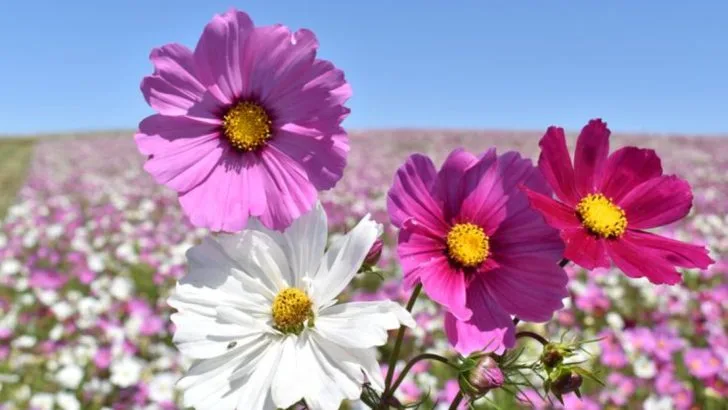Creating a garden that supports pollinators is one of the best ways to enhance biodiversity and contribute to a healthier ecosystem. Bees, butterflies, and hummingbirds are not only essential for the pollination of plants but also play a vital role in maintaining the delicate balance of the environment. By choosing the right pollinator-friendly plants, you can help attract these important creatures while also adding color and vibrancy to your garden.
In this article, we’ll explore 17 plants that attract pollinators and boost your garden’s biodiversity, ensuring a thriving, sustainable garden year after year. Whether you’re looking to support native species or simply want a more colorful garden, these plants will bring life and beauty to your outdoor space.
Lavender
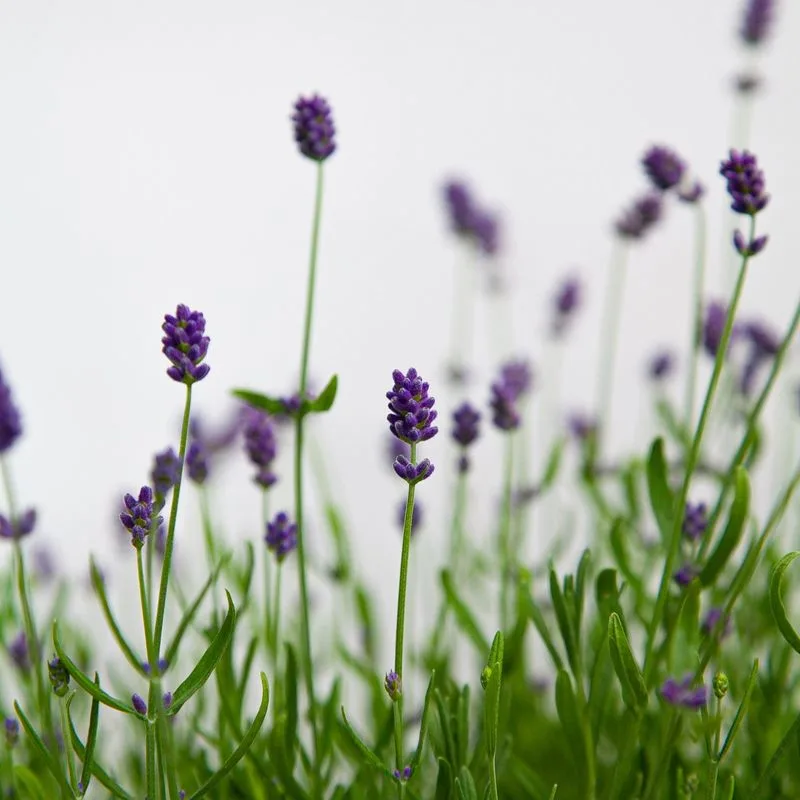
Renowned for its aromatic fragrance, the silvery foliage and vibrant purple blooms of lavender create a stunning visual in gardens. Its blossoms teem with bees and butterflies, drawn to the plant’s nectar-rich flowers. Regular pruning encourages new growth, ensuring a prolonged blooming period. Consider planting in a sunny spot with well-drained soil to maximize its potential. This perennial herb not only enhances the garden’s aesthetics but also repels pests. Versatile and hardy, it’s a must-have for gardeners seeking to boost biodiversity while enjoying its calming scent.
Coneflower

With striking daisy-like petals and a prominent central cone, coneflowers are a classic garden feature. Besides their beauty, they attract a multitude of pollinators including bees and butterflies. These hardy perennials bloom from summer to early fall, providing consistent nectar sources. Plant them in well-drained soil under full sun for best results. Coneflowers also offer medicinal benefits, making them a versatile addition. Their robust nature means they thrive in various conditions, ensuring your garden remains vibrant and lively throughout the seasons.
Milkweed
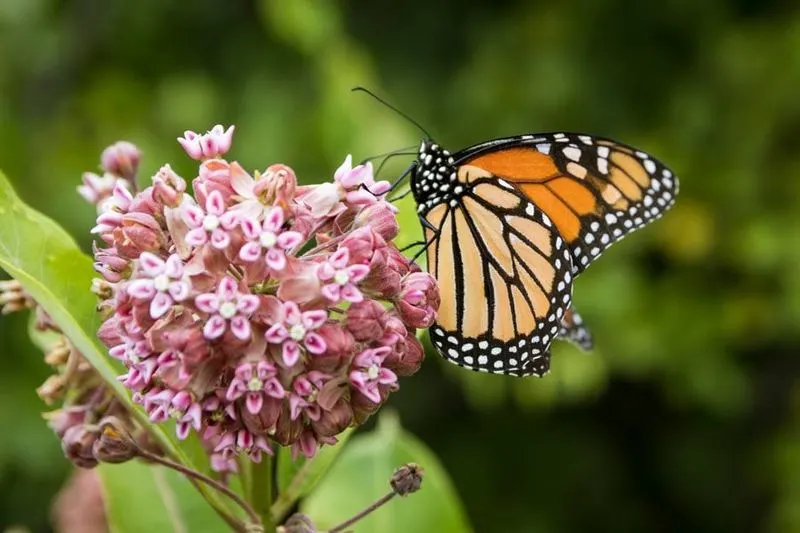
Known for its crucial role in the monarch butterfly lifecycle, milkweed is essential in any pollinator-friendly garden. Its vibrant orange and red blooms lure butterflies and other insects. This hardy perennial thrives in a range of soil types, making it adaptable and easy to grow. Planting milkweed not only supports monarch populations but also contributes to the broader ecological network. Regular watering during dry spells helps maintain its vigor. By adding milkweed, you create a sanctuary for these stunning creatures, ensuring their survival.
Bee Balm

Bee balm boasts showy blossoms in shades of red, pink, and purple, drawing bees and hummingbirds alike. This perennial thrives in moist, well-drained soil and requires full sun to partial shade. Its aromatic foliage also has medicinal properties, often used in herbal teas. Deadheading spent flowers encourages further blooming, extending its attraction for pollinators. Incorporating bee balm into your garden not only enhances visual appeal but also provides essential nectar resources. It’s an excellent choice for creating a dynamic and supportive ecosystem.
Sunflower
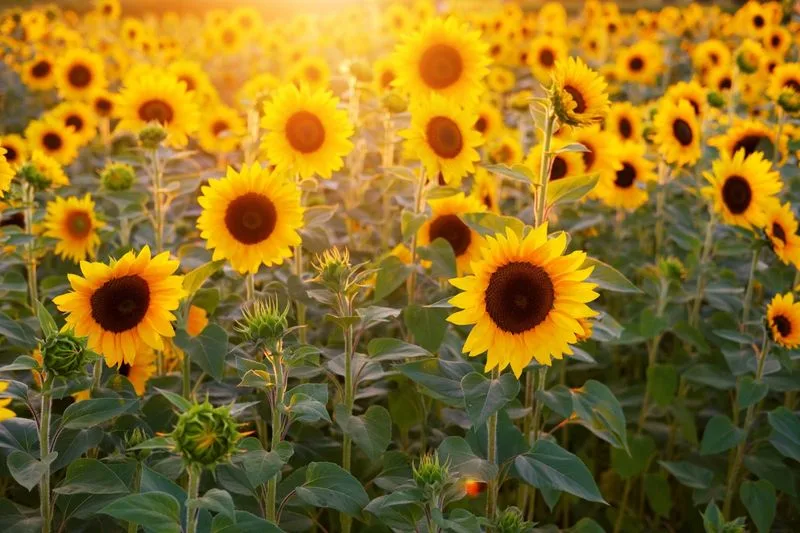
Sunflowers, with their towering stems and sunny blooms, are a staple for attracting pollinators. Their large, open faces provide easy access to pollen and nectar, making them a favorite among bees and birds. These annuals can grow in a variety of soil types, though they prefer rich, well-drained soils under full sun. Beyond their beauty, sunflowers offer seeds that are a nutritious snack for wildlife. Their strong, tall presence makes them a focal point in any garden, adding height and charm.
Borage
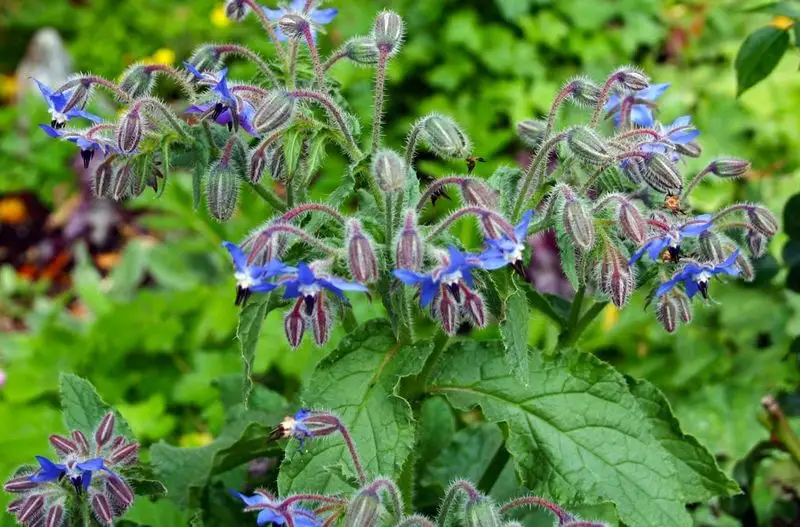
Distinct star-shaped blue flowers make borage a captivating sight. Known for attracting bees, this annual herb enhances garden biodiversity. Its leaves, mildly cucumber-flavored, are edible, adding a culinary edge to its appeal. Borage thrives in full sun with well-drained soil and can benefit from occasional watering during dry periods. As a companion plant, it deters pests, supporting the health of surrounding flora. Easy to grow and self-seeding, borage ensures a continuous presence in the garden. Its vibrant blooms make it a lively addition.
Marigold

Marigolds add a splash of color with their bright orange and yellow blooms, attracting butterflies and beneficial insects. Often used as companion plants, they repel pests due to their distinctive scent. These annuals thrive in well-drained soil with full sunlight. Deadheading encourages more blooms, extending their flowering season. Beyond their gardening benefits, marigolds have cultural significance in various traditions. By planting marigolds, you not only beautify your garden but also support a balanced ecosystem, enhancing the health of your plants.
Zinnia
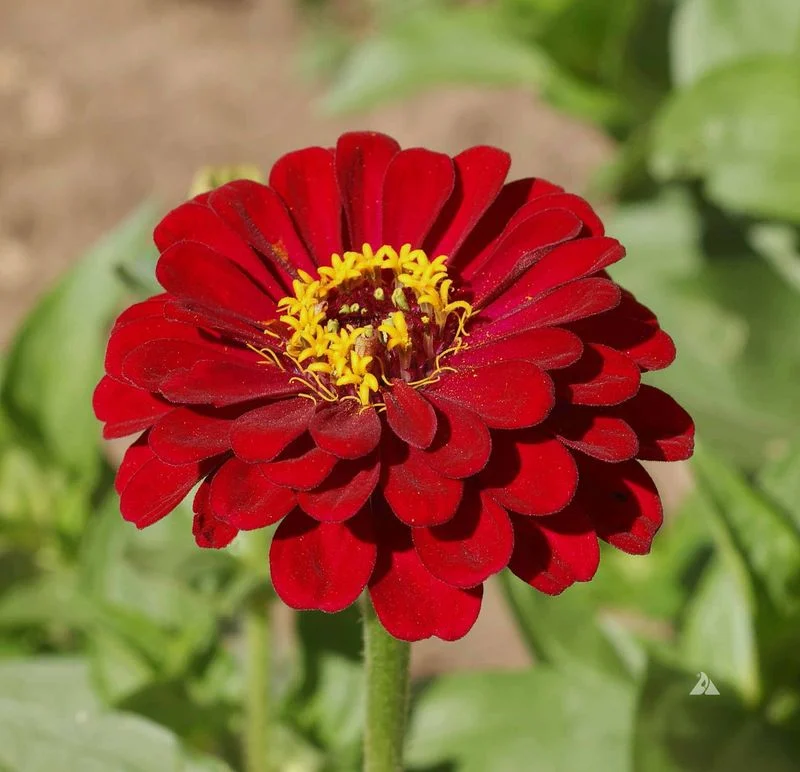
Offering a rainbow of colors, zinnias are easy to grow and perfect for attracting pollinators. Their vibrant blooms appeal to butterflies, bees, and hummingbirds. These annuals thrive in sunny locations with well-drained soil. Regular deadheading prolongs their blooming period, ensuring continuous attraction for pollinators. Zinnias also resist common garden pests, making them a low-maintenance option. Their ability to bloom all summer and into fall makes them a reliable choice for maintaining garden vitality. Their diverse colors add a cheerful touch to any garden setting.
Black-eyed Susan
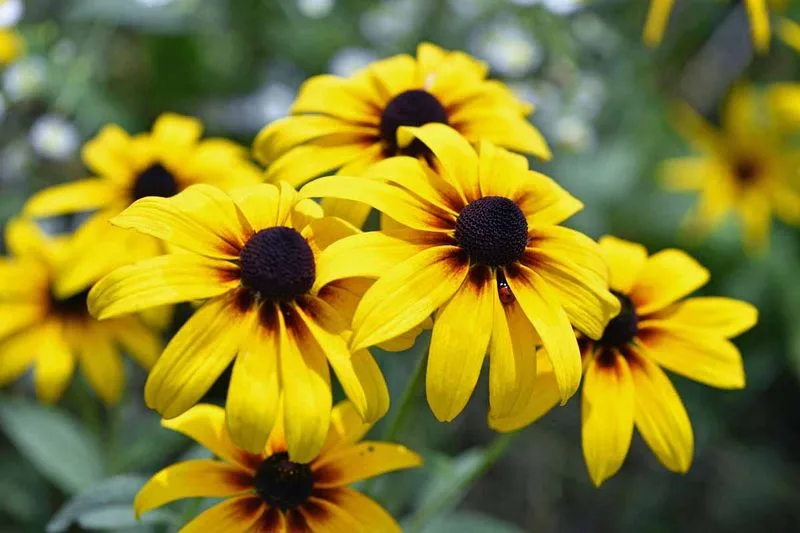
Black-eyed Susans bring a touch of sunshine with their bright yellow petals and dark centers. Ideal for attracting butterflies and bees, these perennials prefer full sun and adapt to various soil conditions. Their resilience makes them a favorite among gardeners seeking to create a pollinator-friendly space. Deadheading extends their blooming season, offering extended resources for pollinators. Additionally, their drought tolerance ensures they thrive even in less-than-ideal conditions. These flowers provide a vibrant display throughout summer and early fall.
Catmint
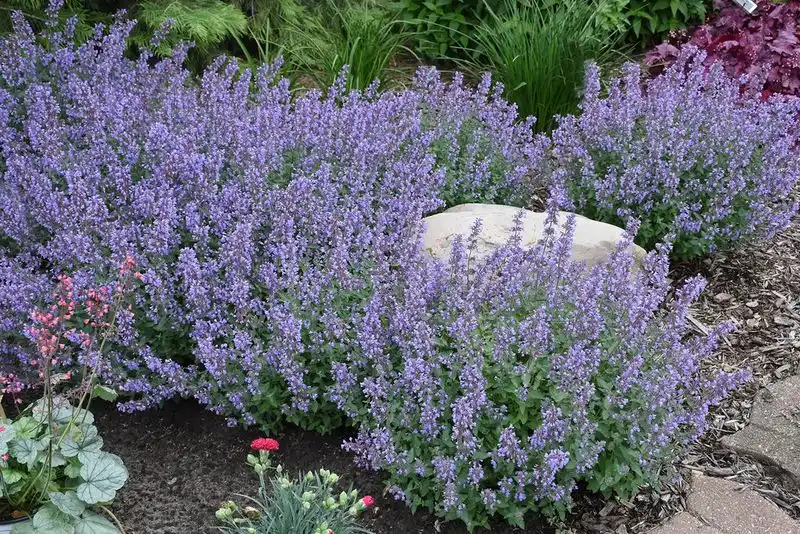
Catmint’s fragrant foliage and soft lavender-blue flowers make it a garden favorite. Known for attracting pollinators, it’s a magnet for bees and butterflies. Thriving in well-drained soil and full sun, catmint is drought-tolerant once established. Pruning after the first bloom can encourage a second flowering, extending its pollinator support. This perennial’s aromatic leaves are also used in herbal remedies, adding utility to its appeal. Incorporating catmint into your garden provides a colorful, aromatic, and pollinator-friendly environment.
Hollyhock
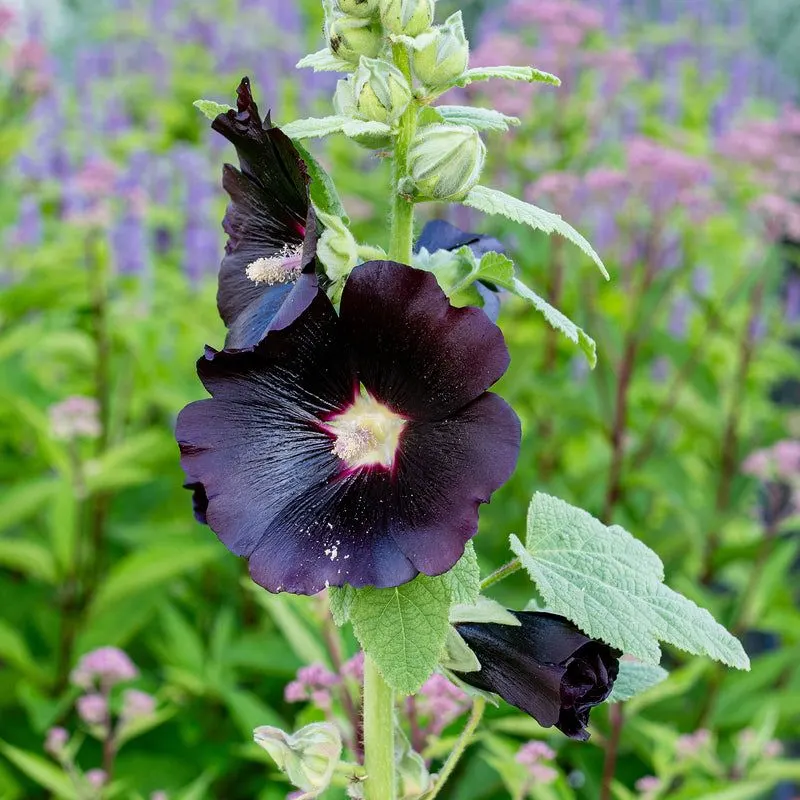
With their towering stems and large, colorful blossoms, hollyhocks create a dramatic garden backdrop. They attract a range of pollinators, especially bees, thanks to their open, cup-shaped flowers. Hollyhocks thrive in sunny spots with well-drained soil and can tolerate poor soil conditions. Their height and colorful presence make them ideal for garden borders. Regular watering encourages healthy growth, while deadheading prolongs blooming. These biennials enchant with their old-world charm and support pollinator populations, enriching garden life.
Salvia
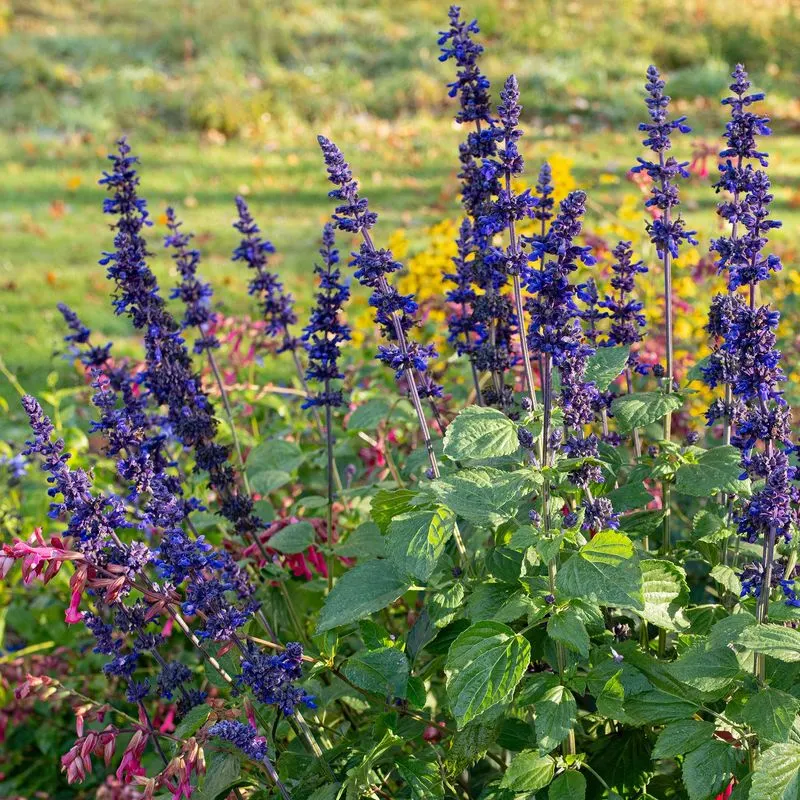
Salvia’s spiky blooms and aromatic leaves add both color and fragrance to gardens. Known for attracting bees, butterflies, and hummingbirds, salvia thrives in full sun and requires well-drained soil. These perennials are drought-tolerant once established, making them low-maintenance. Pruning spent flowers promotes more blooms, extending their attractiveness to pollinators. With numerous varieties, salvia offers diverse colors and shapes, catering to various garden aesthetics. Its presence not only beautifies your space but also supports a vibrant ecosystem.
Lantana
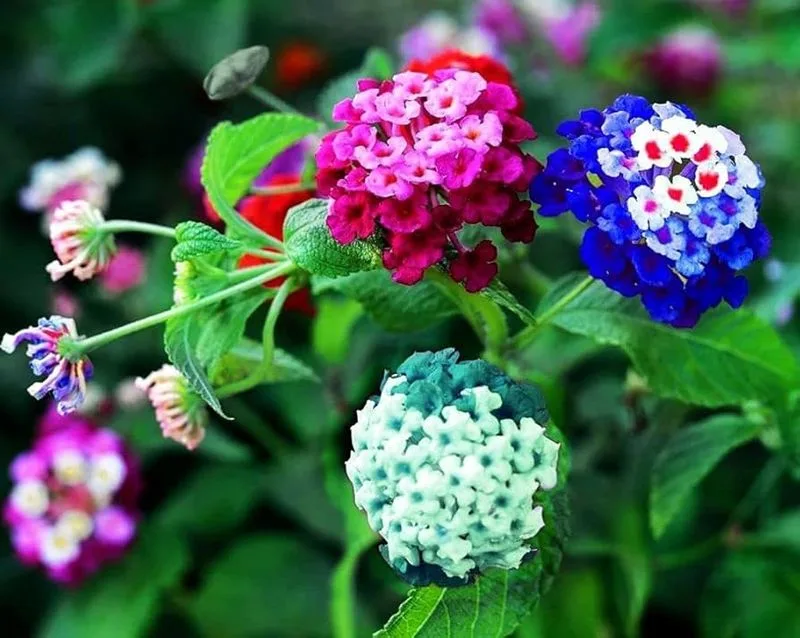
Lantana’s multicolored blooms are a visual treat and a magnet for butterflies and bees. These perennials flourish in sunny locations with well-drained soil, often blooming from spring to frost. Lantanas are also drought-tolerant, reducing watering needs. Regular pruning encourages new growth, maintaining their vibrant appearance. Beyond their pollinator appeal, lantanas are used in landscaping for their ability to cover ground and prevent erosion. By incorporating lantanas, you ensure a colorful, dynamic garden that supports pollinator activities.
Cosmos
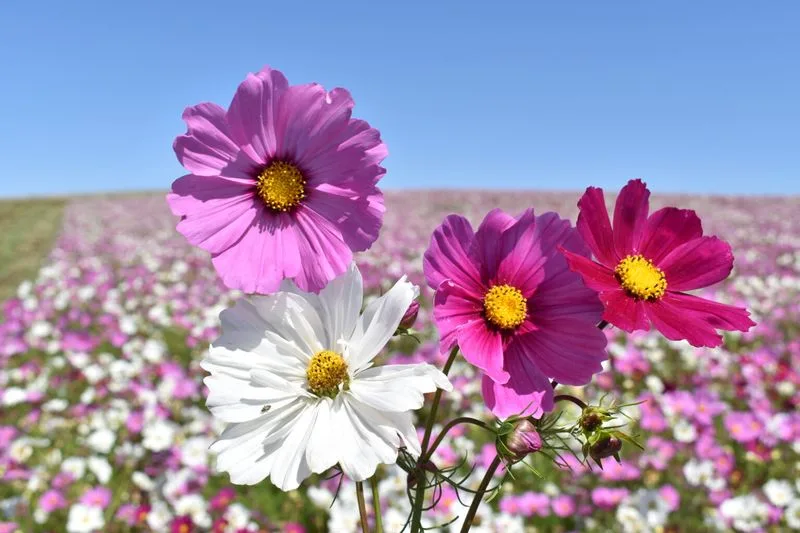
The delicate, airy appearance of cosmos flowers adds a whimsical touch to any garden. Attracting a variety of pollinators, including bees and butterflies, these annuals thrive in sunny areas with well-drained soil. Cosmos are easy to grow, making them ideal for gardeners of all levels. Deadheading encourages continued blooming, providing extended support for pollinators. Their tall, graceful stems add height and movement, creating a dynamic landscape. Simple yet charming, cosmos ensure your garden remains an inviting haven for wildlife.
Aster

Asters offer late-season blooms, ensuring pollinators have a nectar source as other plants fade. Their daisy-like flowers attract bees and butterflies, providing essential resources for these creatures. Ideal for borders, asters thrive in full sun with well-drained soil. Their dense blooms add color to autumn gardens, extending interest beyond summer. Regular watering during dry spells helps maintain their vigor. By adding asters, you contribute to a thriving ecosystem, supporting pollinator health and garden beauty even as the seasons change.
Goldenrod
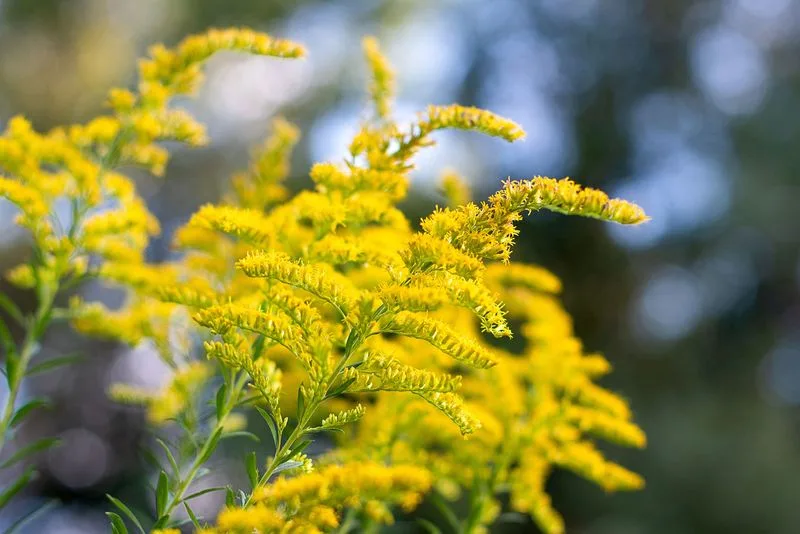
Goldenrod’s bright yellow flowers are not only eye-catching but also vital for late-season pollinators. Often misunderstood as an allergen, goldenrod actually plays a crucial role in supporting bees and butterflies. These perennials flourish in sunny, well-drained locations and require minimal care. Their height and vibrant color make them excellent for adding structure to garden layouts. By introducing goldenrod, you ensure a sustained nectar source for pollinators, aiding their survival as other flowers wane. Its contribution to biodiversity is invaluable.
Yarrow
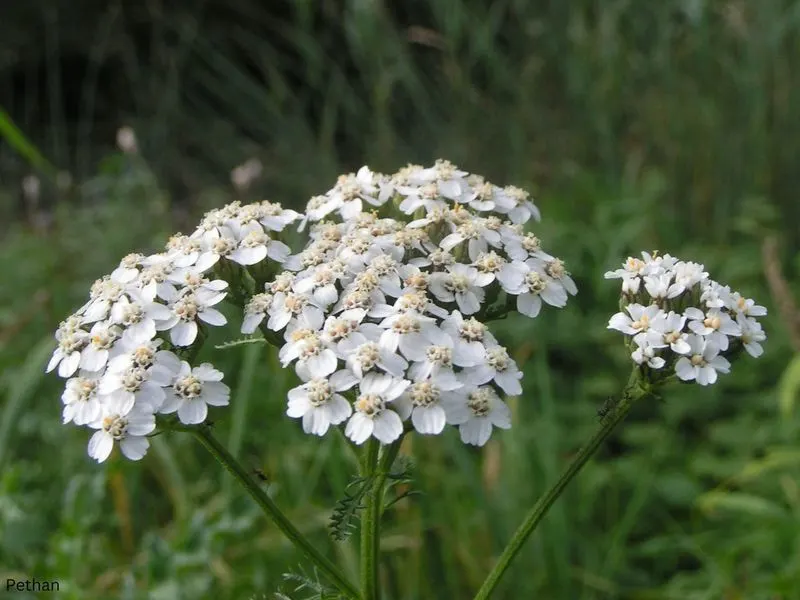
Yarrow’s flat-topped clusters of flowers provide an accessible landing pad for pollinators. Known for attracting bees, butterflies, and beneficial insects, this hardy perennial thrives in well-drained soil and full sun. Yarrow’s drought tolerance and resilience make it ideal for low-maintenance gardening. The plant also offers medicinal properties, historically used for its healing qualities. By planting yarrow, you create a supportive environment for pollinators while enjoying its easy-care nature and delicate beauty. Its presence enhances garden biodiversity.

